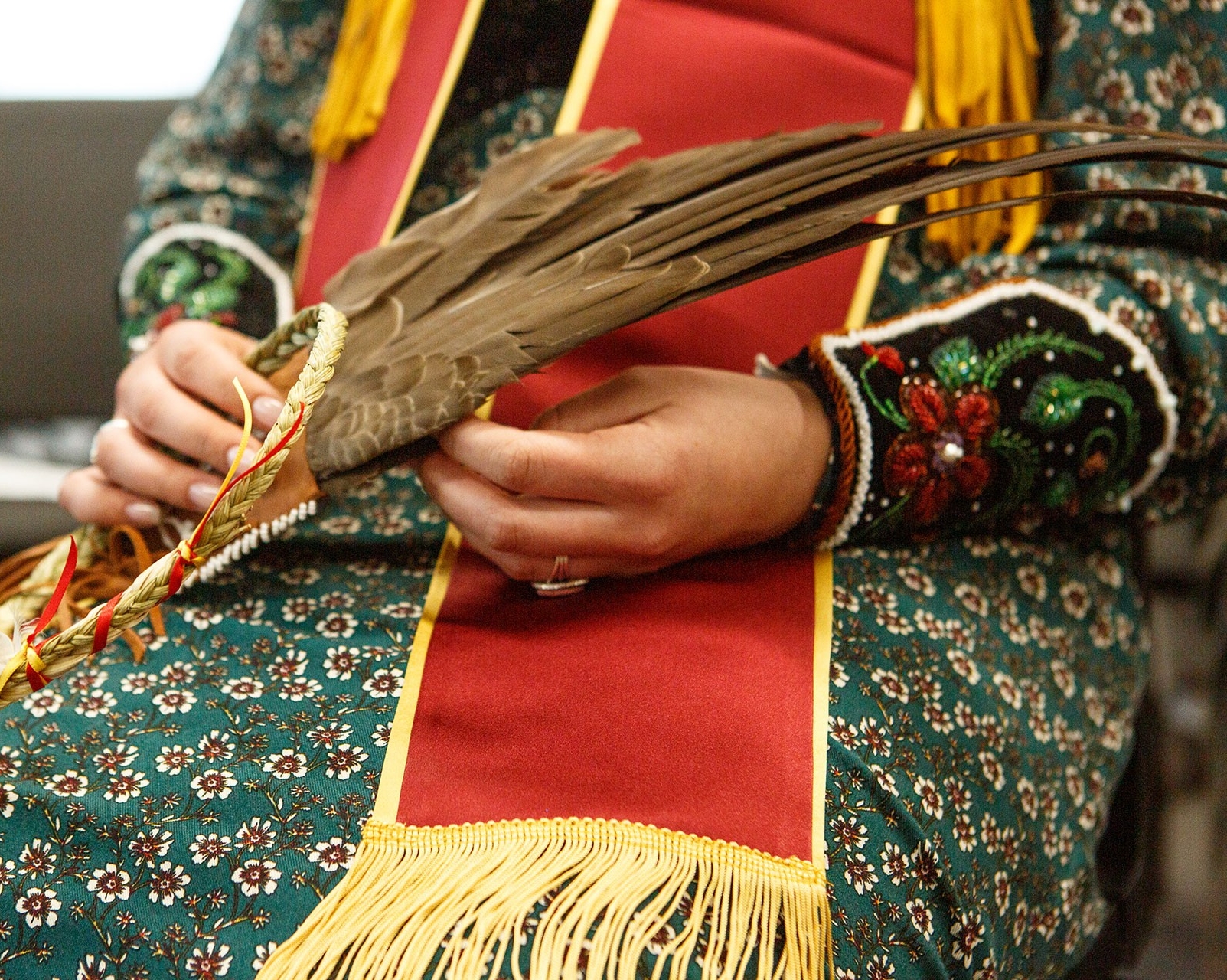Sept. 30 is upon us once again, the fourth year this day will be observed as a time to reflect on the history of colonialism, and its ongoing impacts, on the Indigenous Peoples and communities in what is now called Canada.
This day first became recognized as Orange Shirt Day by grassroots organizers in 2013, when Canadians honour the Survivors of Residential Schools and acknowledge the intergenerational effects of these institutions on Indigenous Peoples.
Inspired by Survivor Phyllis Webstad’s testimony shared with the Truth and Reconciliation Commission (TRC) — where she described how the orange shirt her grandmother had given her was taken away on her first day of Residential School — the orange shirt emerged as an enduring symbol of Indigenous resilience.
While we continue to wear orange shirts to honour Survivors and acknowledge that not every child returned home, the federal government in 2021 officially declared Sept. 30 a statutory holiday and called it the National Day for Truth and Reconciliation (NDTR).
Truth-telling
In this country, reconciliation is an ongoing process of repairing and rebuilding the relationship between Indigenous Peoples and settlers, and the relationship between Indigenous Peoples and the Canadian government.
It has often taken the form of truth-telling probes such as the TRC, which ran from 2008 to 2015, collecting testimony from Survivors and their communities and examining the systemic harms caused.
Understanding the Residential Schools system has been an important starting point. That said, it was only one of the many destructive and assimilationist tactics imposed upon Indigenous Peoples.
This year, in addition to learning more about Residential Schools, I invite you to learn about some of the many other culturally devastating practices: the Potlatch Ban, the Sixties Scoop, the Millennium Scoop, the forced and coerced sterilization of Indigenous women and the contemporary concerns Indigenous Nations and groups face today as a result of this history.
No songs, dances or large gatherings
While Residential Schools were designed to cut off Indigenous children from their languages, families and teachings, the Potlatch Ban sought to suppress associations and criminalize cultural and spiritual practices among adults.
The Potlatch Ban, instituted in 1885 through an amendment to the Indian Act, prohibited Indigenous ceremonies, including songs, dances and gatherings that were deemed to be too large or threatening to colonial authorities.
This effectively made potlatches (ceremonial assemblies practised by Indigenous peoples of the Pacific Northwest Coast to mark important events such as births, marriages or funerals), sun dances (sacred ceremonies of spiritual renewal that are held annually by many First Nations peoples from the Prairies) and powwows (gatherings featuring music, dancing, eating and the trading or selling of goods) illegal until the ban was lifted in 1951.
These ceremonies, however, continued underground, with one of the most infamous instances being Chief Dan Cranmer’s potlatch on Christmas Day in 1921. Although the potlatch was held in secret, it was attended by at least 300 guests and was ultimately raided by Indian agents, resulting in 45 people being arrested and charged.
Officials confiscated more than 750 cultural items used in the potlach, the bulk of which were sent to the Royal Ontario Museum (ROM) in Toronto, the Museum of the American Indian in New York and the then‐National Museum in Ottawa, now called the Canadian Museum of History.
The museums held these items in their collection from 1922 until the ROM began the process of repatriation by returning its portion of the collection in 1988.
The foster care crisis
Many Indigenous children were forcibly taken from their families and placed in non-Indigenous homes by child welfare authorities in a practice known as the Sixties Scoop, which went on from the 1960s to the 1980s.
It is estimated that more than 20,000 Indigenous children were separated from their families and funnelled into the Canadian child welfare system for assimilationist purposes.
Families were dismantled as siblings were dispersed to new homes, sometimes even in different countries. This succeeded in disconnecting Indigenous children from their roots and families. Many of these adopted children discovered their true heritage only later in life as adults.
Since 2021, Survivors of the Sixties Scoop have been calling for a separate national inquiry to trace the histories of erasure and loss experienced by the displaced children.
Even more alarming is that the forced removal of Indigenous children from their families continues today, a reality now often referred to as the Millennium Scoop.
According to Statistics Canada, although Indigenous children account for only 7.7 per cent of Canada’s child population, they comprise more than 53 per cent of children in foster care.


